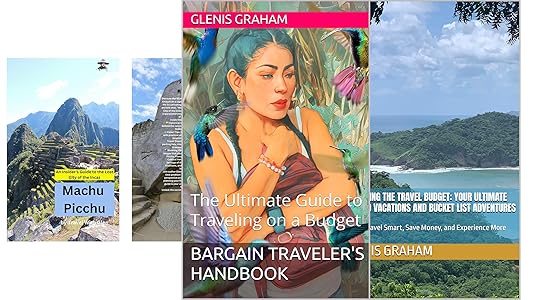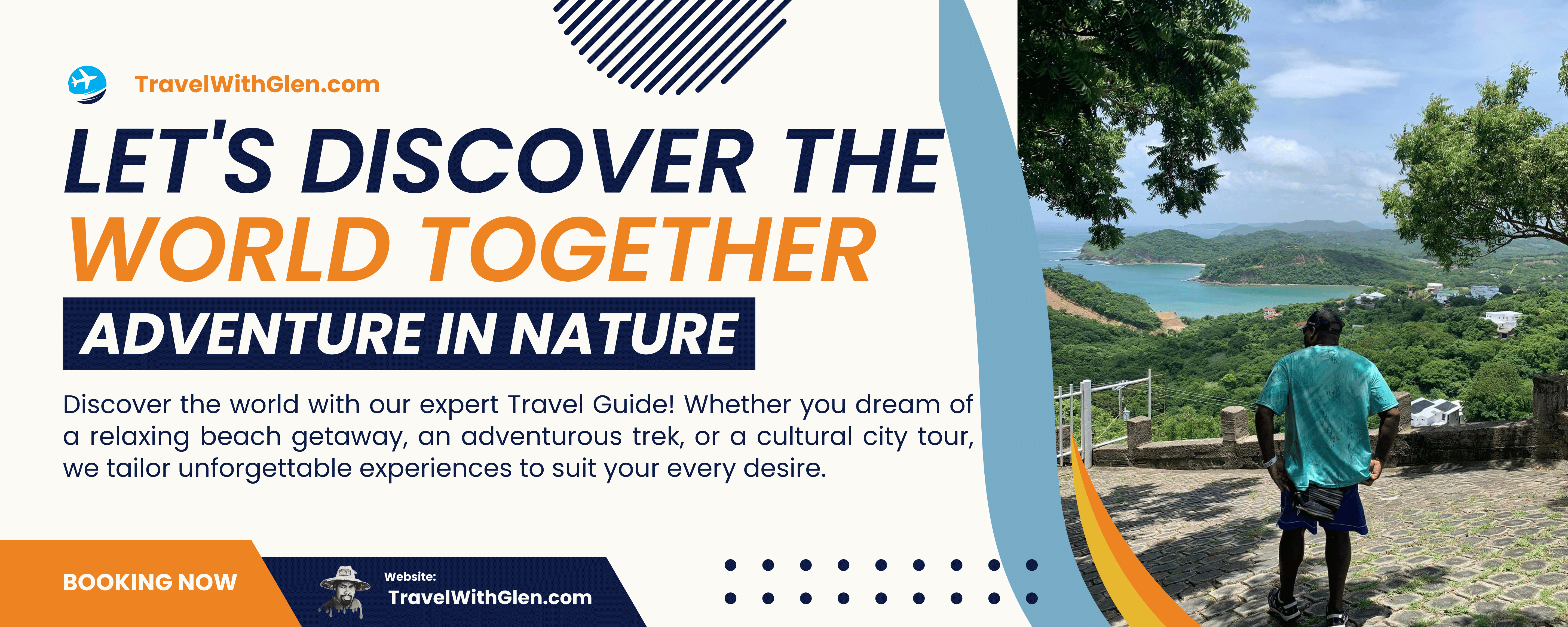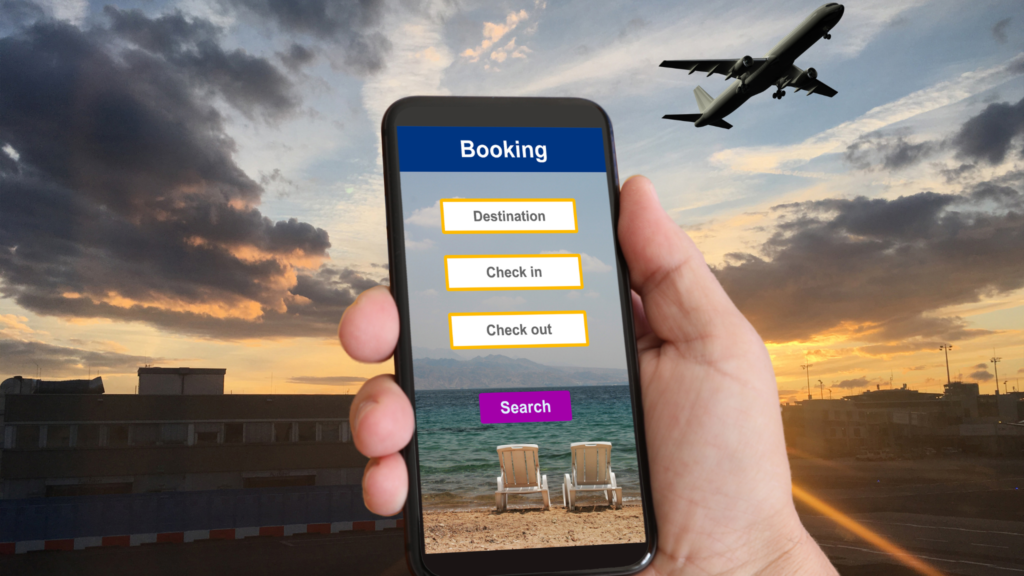Ultimate Guide to Balancing Work and Travel
Balancing work and travel is all about staying productive while exploring new destinations. To thrive as a digital nomad, you need a strong routine, effective tools, and smart planning. This guide breaks down everything you need to know:
- Set up a portable workspace: Lightweight laptop, noise-canceling headphones, portable Wi-Fi, and ergonomic tools.
- Create a work schedule: Use time management techniques like the Pomodoro method, task batching, and time zone planning.
- Choose the right destinations: Look for reliable internet, affordable living costs, safety, and visa options.
- Manage finances: Budget wisely, use multi-currency banking tools like Wise, and stay on top of tax rules.
- Stay healthy and connected: Separate work from leisure, prioritize self-care, and build relationships through coworking spaces or meetups.
Whether you’re a freelancer, remote worker, or frequent traveler, this guide offers practical tips to help you succeed on the road.
How to work and travel | Productivity Tips for Digital Nomad
How to Build a Work Routine While Traveling
Keeping up with work while traveling takes planning and the right tools. Here’s how to stay productive no matter where you are.
Setting Up a Portable Workspace
Your workspace on the go should be practical and easy to set up anywhere. A few essentials can make a big difference:
- A lightweight laptop for portability
- Noise-canceling headphones to block distractions
- A portable Wi-Fi hotspot for reliable internet access
- Ergonomic tools like a collapsible stand for comfort
With these items, you can create a functional workspace in almost any environment. Once your setup is ready, the next step is to establish a routine that keeps you on track.
Making a Consistent Work Schedule
A well-planned schedule helps you balance work and travel. Start by syncing your hours with your productivity patterns and any client needs. Tools like World Time Buddy can help manage time zone differences.
Here’s how to structure your schedule:
- Plan around your peak hours: Work when you’re naturally most focused and energetic.
- Set specific work blocks: Dedicate clear time slots for focused tasks.
- Consider time zones: Ensure overlap with clients or team members when necessary.
Using Time Management Methods
Managing your time is key to meeting deadlines while still enjoying your travel experience. Try these strategies:
- Pomodoro Technique: Work in 25-minute focused sessions followed by 5-minute breaks to stay sharp and avoid burnout [3].
- Task Batching: Group similar tasks, like handling emails or scheduling calls, into one time block to reduce distractions [3].
- Prioritize Wisely: Tackle high-priority tasks during your most energetic hours. Save less demanding work for times when you’re feeling tired, such as after a long flight.
Apps like Asana and Trello can help you stay organized and adapt to changing schedules while on the move [4].
Picking the Best Travel Destinations for Work
Choosing the right destination can make a huge difference in maintaining productivity while enjoying the perks of travel. Here’s how to find locations that meet both your professional needs and travel goals.
What to Look for in a Destination
When deciding on a destination, keep these key factors in mind to support your digital nomad lifestyle:
| Factor | Key Considerations |
|---|---|
| Internet Infrastructure | Speeds of at least 20 Mbps for smooth video calls and uploads |
| Cost of Living | Monthly expenses, including workspace and housing |
| Safety | Local crime rates and overall security |
| Visa Policy | Length of stay and rules for remote work |
| Time Zone | Compatibility with your clients or team’s schedule |
Before making a decision, use tools like Speedtest.net to check internet speeds and Numbeo to compare living costs.
Top Locations for Digital Nomads
Some cities stand out for their combination of infrastructure and lifestyle benefits:
Chiang Mai, Thailand
- Internet speed averages 20 Mbps
- Monthly living costs are roughly $1,000
- Affordable and home to a thriving digital nomad community
Lisbon, Portugal
- Monthly expenses are around $2,000
- Offers excellent infrastructure and digital nomad visa options
- A mix of modern amenities and rich cultural experiences
Balancing Work and Leisure
The secret to a successful work-travel experience is picking places that support both productivity and relaxation:
- Look for coworking spaces with fast internet and networking opportunities.
- Plan your stay during ideal seasons (e.g., Bali’s dry season for better weather and connectivity).
- Seek destinations like Barcelona, which offer coworking hubs alongside cultural experiences and beaches.
“The trend of slow travel is becoming increasingly popular among digital nomads, as it allows for deeper exploration of destinations while maintaining work productivity” [1][4].
Travel With Glen’s guides can help you find destinations that combine work-friendly infrastructure with great leisure options. Once you’ve picked your destination, the next step is managing your finances to sustain your nomadic lifestyle.
Managing Money While Traveling
Handling your finances wisely is key to maintaining the digital nomad lifestyle. Good money management helps you stay on track with your work and travel plans without unnecessary stress.
Budgeting Tips for Travelers
Divide your budget into categories like housing, essentials, leisure, emergencies, and savings to keep your finances steady. Use apps like Mint or You Need a Budget (YNAB) to monitor your spending. A study by MBO Partners found that 62% of digital nomads cite financial stress as a major hurdle [2]. Staying on top of your budget can help reduce this pressure.
Banking and Payment Options
Traveling across borders is easier with modern banking tools. Services like Wise and Revolut offer multi-currency accounts to cut down on fees and simplify international transactions.
Quick Money-Saving Tips:
- Skip airport currency exchanges; they often have poor rates.
- Use ATMs linked to major banks to avoid extra charges.
- Transfer money when exchange rates are in your favor.
- Keep some emergency cash in widely accepted currencies like USD or EUR.
Understanding Tax Rules for Nomads
Taxes can be tricky when you’re constantly on the move. According to a Nomad List survey, 71% of digital nomads maintain tax residency in their home country [4].
Key Tax Tips:
- Keep track of how long you stay in each country and organize your financial records.
- Work with a tax professional who understands the rules for digital nomads.
- Save important financial documents securely in the cloud for easy access.
sbb-itb-526cef7
Keeping Work-Life Balance While Traveling
Once your finances are sorted, the next challenge is maintaining a balance between work and personal life while traveling. The digital nomad lifestyle gives you a lot of freedom, but it’s important to set boundaries and prioritize self-care to avoid burnout.
Separating Work Time from Free Time
Drawing a clear line between work and leisure is crucial for staying productive and enjoying your travels. A great way to manage this is by using tools like Google Calendar or Trello to schedule your day. Set specific work hours and treat your free time as non-negotiable. For example, if your energy peaks in the morning, you might dedicate 6 AM to 2 PM to work, leaving the rest of the day for exploring.
A simple end-of-day routine – like shutting down work apps or going for a walk – can help you mentally transition from work mode to relaxation mode. This small habit can make a big difference in separating the two.
Taking Care of Your Health
Traveling constantly can make it harder to prioritize your health, but a few consistent habits can go a long way. Here are some tips:
- Stay active by using local gyms, fitness apps, or doing bodyweight exercises.
- Stick to regular meal times and drink plenty of water.
- Use meditation apps to practice mindfulness and reduce stress.
- Keep a digital journal to process your thoughts and experiences.
- Adjust to new time zones gradually to avoid sleep disruptions.
- Carry portable tools like eye masks to create a sleep-friendly environment.
Meeting People on the Road
Traveling solo doesn’t mean you have to feel isolated. Building connections is easier if you’re intentional about it.
Coworking Spaces: These are not just great for work – they’re also excellent for meeting like-minded people through events and casual networking.
Ways to Build Community:
- Join language exchange meetups or group activities.
- Attend local events to immerse yourself in the culture.
- Stay in coliving spaces that combine accommodation and workspaces.
- Use platforms designed for digital nomads to connect with others on the same journey.
Balancing productive work habits with meaningful social interactions can make your travels more fulfilling. This combination lets you enjoy professional growth while creating memorable experiences on the road.
Useful Tools and Resources for Digital Nomads
Having the right tools can make balancing work and travel much easier, letting you stay productive while enjoying new experiences.
Best Tools for Remote Work
When working on the go, reliable digital tools are a must. Platforms like Asana and Trello help manage tasks and deadlines, even when you’re working across time zones. For team communication, Slack is great for instant messaging and file sharing, while Google Meet keeps video calls with clients and colleagues simple.
To manage your schedule, Google Calendar is perfect for coordinating meetings, especially when juggling different time zones. Apps like Timely are helpful for tracking work hours and monitoring project progress. If you’re frequently using public Wi-Fi, a secure option like TunnelBear VPN ensures your data stays safe.
Don’t forget about your physical setup. A lightweight laptop stand and an external keyboard can make long work sessions much more comfortable, wherever you are.
Once your work tools are sorted, it’s time to make your travel planning just as smooth.
Travel Planning Platforms
Effective travel planning keeps distractions to a minimum, so you can focus on your work. Services like Travel With Glen offer curated guides, easy bookings, and 24/7 support to help manage your travel needs.
| Travel Planning Need | Recommended Tools |
|---|---|
| Accommodation | Airbnb, Booking.com |
| Flight Booking | Travel With Glen, Skyscanner |
| Local Transportation | Google Maps, Rome2Rio |
| Travel Insurance | SafetyWing, World Nomads |
Networking and Community Platforms
Traveling can sometimes feel isolating, but networking platforms make it easier to connect with others. Nomad List and Meetup are excellent for finding fellow digital nomads and meeting locals.
Nomad List is particularly useful, offering details about cities like internet speeds, coworking spaces, and living costs. These platforms not only help you stay connected but also make your travels more fulfilling by introducing you to new people and opportunities.
How to Handle Common Challenges
Balancing work and travel as a digital nomad comes with its own set of challenges. Tackling these issues effectively can help you maintain a balanced and enjoyable lifestyle.
Coping with Loneliness
Loneliness is a common struggle for digital nomads. Staying connected with others can make a big difference. Here are some practical ways to build and maintain relationships:
| Connection Type | Specific Actions |
|---|---|
| Virtual Connections | Schedule regular video calls with family, or set up virtual coffee chats with friends. |
| Local Community | Join coworking spaces, attend local events, or participate in language exchange meetups. |
| Digital Nomad Networks | Engage with communities like Nomad List or local Facebook groups for digital nomads. |
Coworking spaces are particularly helpful, offering not only a stable work environment but also opportunities to meet like-minded professionals. Platforms like meetup.com and Couchsurfing can help you connect with locals and other travelers for both social and professional networking.
Getting Reliable Internet
Reliable internet is essential for staying productive. To avoid disruptions, plan ahead and ensure you have dependable connectivity options at your destination.
Primary Connection: Research internet speeds and providers at your destination using tools like nomadlist.com before booking accommodations.
Backup Solutions:
- Carry a portable hotspot.
- Get a local SIM card as soon as you arrive.
- Use SIM cards from two different carriers for added reliability.
- Locate nearby coworking spaces and cafes with strong Wi-Fi as fallback options.
With a solid internet plan in place, you can focus on adapting to your new environment without worrying about work interruptions.
Adjusting to Local Customs
Adapting to a new culture takes effort but can make your experience much more enjoyable and productive. Understanding local customs helps you navigate both personal and professional interactions more smoothly.
Tips for Cultural Integration:
- Learn about local customs and taboos before arriving.
- Pick up basic phrases in the local language.
- Observe how locals behave in public settings.
- Take part in cultural activities like festivals or workshops.
- Join expat groups to get advice on navigating cultural differences.
Time management is also key when adjusting to a new culture. Techniques like time-blocking can help you balance work commitments with opportunities to immerse yourself in local traditions. For example, you can dedicate specific hours to work while leaving room to explore and engage with your surroundings.
Traveling more slowly can also deepen your understanding of a culture. Spending extended time in one place allows you to build stronger connections and gain a fuller appreciation of local customs, making your work-travel lifestyle even more fulfilling.
Conclusion
Key Takeaways
Getting used to the digital nomad lifestyle doesn’t happen overnight. It often takes a few months of experimenting to find what works best. The essentials? Setting up a solid work routine, keeping a financial safety net (about six months of expenses), having dependable tech gear, and building connections through coworking spaces or local communities.
“The digital nomad lifestyle requires preparation, research, and time to master.” – Startups.co.uk
Steps to Get Started
Ready to begin your digital nomad journey? Here’s how you can take the first steps:
- Look for a remote job or freelance opportunities that allow location flexibility.
- Use tools like Nomadlist to choose a destination based on factors like internet speed, safety, and cost of living.
- Create a portable workspace that fits your needs.
- Test the waters with a short trip to a nearby destination before committing to a full-time nomadic lifestyle.
Platforms like Travel With Glen can simplify your travel planning, letting you focus on balancing work and adventure. Taking small, thoughtful steps at the start can set you up for a rewarding and sustainable work-travel experience.
![]()










